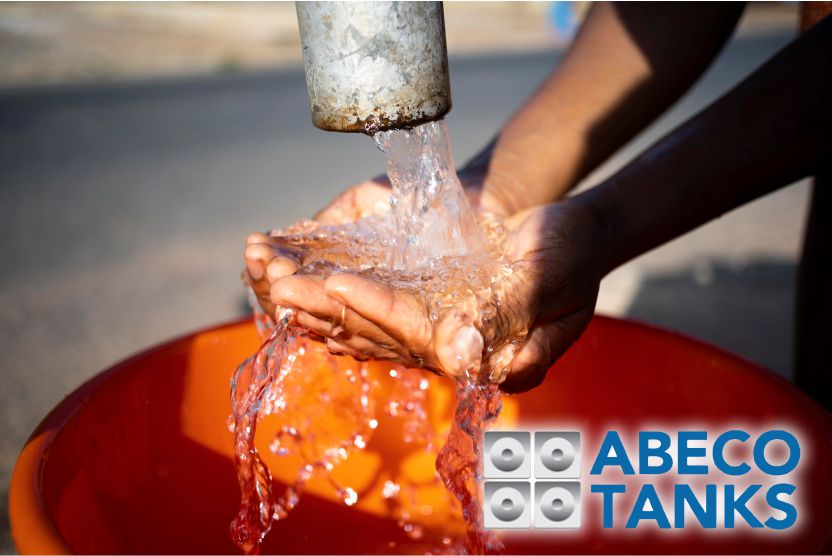
Loadshedding in South Africa has become the norm and will continue for at least two more years but another problem has arisen due to these prolonged blackouts and that is an interruption in water supply.
When the stages of loadshedding are higher (stage 6 and 8) and there is no electricity for four hours or more the critical pipelines and water pump systems are interrupted. The reservoirs rely on a continuous flow of pumped water and when there is a prolonged period of no electricity at one time, as in 4 hours or more, the continuous flow is interrupted and the reservoirs are not able to fill up quickly enough.
The worst affected areas are the high lying areas as their water needs to be pumped up hill.
Gauteng is a case in point due to the high elevation difference between the Vaal dam and the Witwatersrand escarpment. Another case in point is the Helderberg area in Somerset West where houses are built up the side of the mountain and rely on water to be pumped up hill.
The high usage of water in South Africa also needs to be addressed. South Africans are each using more than the global average of 173 litres of water a day and there is a call for South Africans to be more aware of the amount of water they are using.
A generator, inverter and solar power has become common place in South African homes and businesses and now water storage systems and water efficiency systems are becoming a necessity as well.
Mannie Ramos Jnr, COO of Abeco Tanks in South Africa says four strategies need to be implemented – store, inform & educate, recycle & reuse, and conserve.
1.Install a water storage tank
Water storage tanks ensure that businesses and homes can keep running in the event of an interruption in the water supply. Tanks store municipal water that is kept free from algae and bacteria maintaining the quality of the water and ensuring it is drinkable and usable for cooking and cleaning.
Abeco calls their tanks a ‘water bank’ as they act like a ‘savings account’ saving water for times of crisis.
All of the components making up Abeco’s tanks – the steel panels, bolts, screw etc – are made from high quality steel that is hot dipped galvanised to ensure that no light penetrates the steel causing algae and bacteria build up in the water. The steel used for the steel panels is also put through a high yield stress test to ensure the tanks don’t buckle under the pressure and weight of the water inside.
Abeco Tanks manufactures different size tanks that can hold from 10 000 litres to 50 million litres of water at a time. Their tanks come in different shapes including circular, rectangular, square, oblong, L-shaped and U-shaped. They can custom build a tank to suit the space allocated to the tank and to suit the needs of the customer.
As a company that has been running since 1983 they are highly regarded throughout Africa as reliable and efficient supplying high quality steel tanks that stand the test of time.
2. Inform & educate
A respect for water needs to be instilled in the South African population from children to adults. Water is the most precious commodity on the African continent today.
The important sectors keeping South Africa’s economy running are real estate, business services, manufacturing, catering, finance, general government services, accommodation (tourism) and trade and all of them rely on water to function efficiently and contribute to the economy.
Water education should be taught in school and at home. Businesses should educate their staff, municipalities their communities and the media should be used to educate the public.
“Initiatives implemented for water conservation will fail if there is not a change in the behaviour of South Africans towards the use of water on a day to day basis” says Ramos.
3. Recyle and reuse
Recycling and reusing water is a wonderful way to save water consumption. There are a few systems that can be installed in businesses, homes, schools, clinics, hospitals, mines, manufacturing facilities, etc for this purpose:
- Rainwater tanks can be used to harvest rainwater from the roof of a building to be used to flush toilets and water gardens.
- Greywater recycling systems can be installed in businesses and homes and recycle water that has already been used in baths and showers, washing machines and sinks. This water is then used for flushing toilets and irrigation.
Other sources of water for possible reuse include water used in industry process, stormwater, cooling water, agriculture runoff and return flows, municipal wastewater and water from natural resource extraction activities.
4. Conserve water
What does it mean to conserve water? It is using water efficiently to reduce water usage on a daily basis.
Water efficiency systems can be installed in offices, homes, farms, schools, hospitals, clinics, manufacturing facilities, mines etc.
These systems include:
- High-efficiency toilets that flush 4.5 litres of water compared to 61 litres flushed by older toilets. That is a huge difference in water usage.
- High-efficiency showerheads use up less than 7.5 litres of water every minute.
- High-efficiency taps that have a flowrate of 5.6 litres compared to the that of inefficient taps which use 8.3 litres
It is also important to ensure leakages are frequently checked for and repaired as up to 60% of water usage is due to leaking toilets, pipes and taps.
